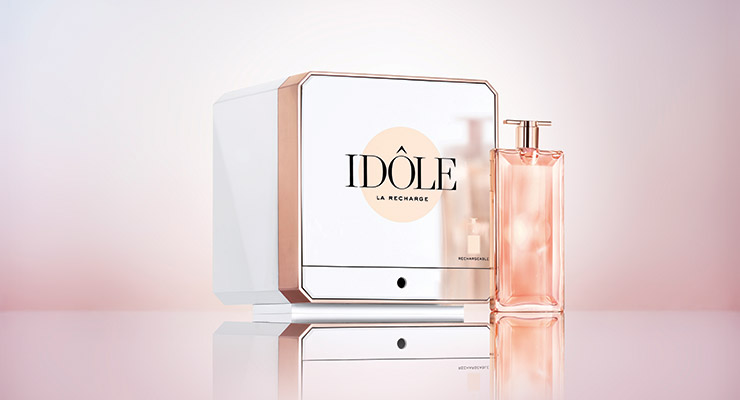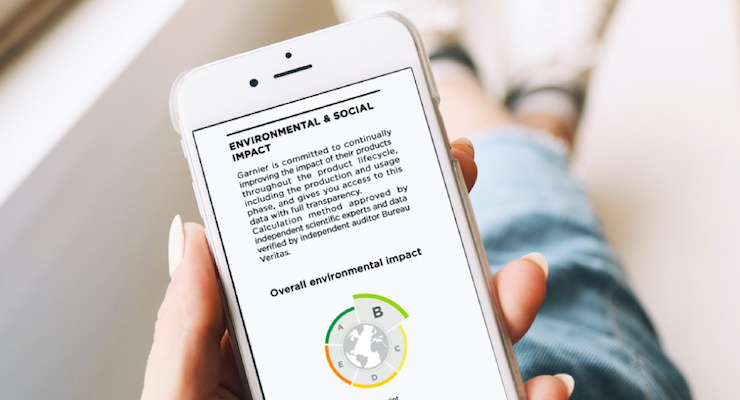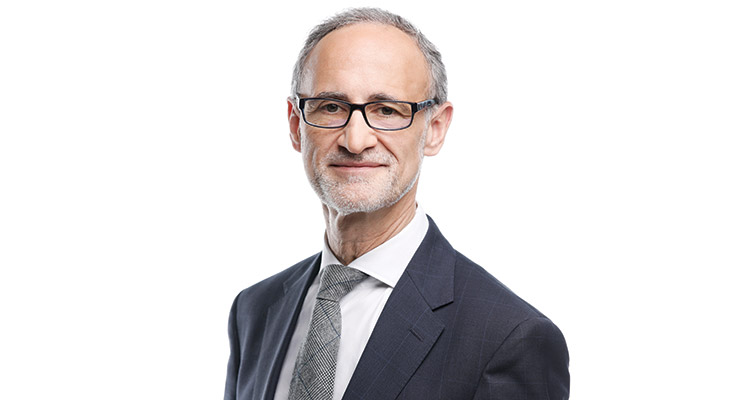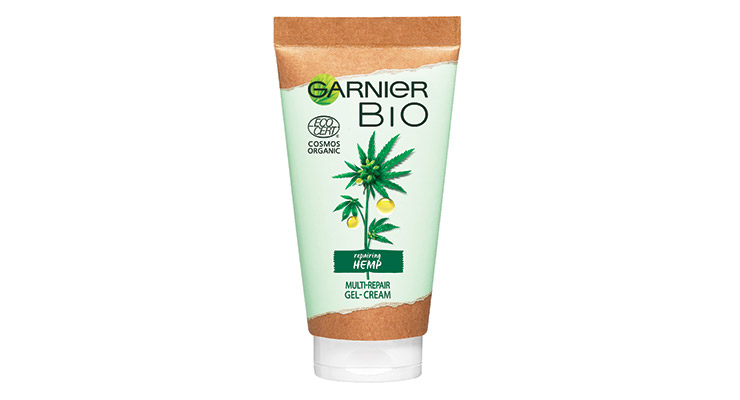Jamie Matusow, Editor-in-Chief02.03.21
In this interview, Philippe Bonningue, L’Oréal’s Global Director of Sustainable Packaging—and a member of Beauty Packaging’s Board of Advisors—provides details on the world’s largest beauty company’s sustainable initiatives, from eco-design to numbered labeling systems—and the on-pack info they’re including more of.
Philippe Bonningue, L’Oréal’s Global Director of Sustainable Packaging, joined Beauty Packaging’s Board of Advisors shortly after we met in 2011. Along the way, he has provided outstanding insight on sustainable packaging to both me and our readers—as he is always on the cusp of technologies and solutions.
In mid-2013, Philippe’s role became to establish the vision, the missions and the strategy of the Group for the most responsible packaging activity, in support of their major Sharing Beauty With All worldwide program, and for the L4TF program (L’Oréal For The Future), since 2020.
Philippe led the packaging part of the creation of the environmental and social assessment SPOT Methodology (Sustainable Product Optimization Tool) in 2016, and the co-foundation of the SPICE initiative (Sustainable Packaging Initiative for CosmEtics, 2018).
Recently, he took the time to answer the questions I posed to him about one of cosmetic packaging’s most pressing topics: Sustainability.
Q&A with Philippe Bonningue, Global Director of Sustainable Packaging at L’Oréal
Jamie Matusow: What are the specifics of the L’Oréal for the Future program? A general overview...
Philippe Bonningue: L’Oréal for the Future embodies the Group's new sustainable commitments from 2020 to 2030, taking over from L’Oréal’s first program launched in 2013, Sharing Beauty with All. Both programs accelerate the sustainable-packaging strategy set several years ago (2007).The L’Oréal for the Future program is based on the two complementary dimensions of what corporate responsibility means to us: transforming our company towards an increasingly sustainable business model and contributing to solving the challenges facing the world.
L’Oréal for the Future’s strategy is built on three pillars: Transforming ourselves with respect to the nine planetary boundaries; empowering our business ecosystem, helping them transition to a more sustainable world; contributing to solving the challenges of the world, by supporting urgent social and environmental needs.
JM: What are the program’s sustainable packaging goals?
PB: The L’Oréal for the Future program covers many fields, several of them being for the packaging:- By 2025, 100% of our plastic packaging will be refillable, reusable, recyclable or compostable
- By 2030, 100% of the plastics used in our packaging will be either from recycled or bio-based sources (we will reach 50% in 2025)
- By 2030, we will reduce by 20% in intensity the quantity of packaging used for our products, compared to 2019 100% of products being eco-designed
JM: What materials will be widely used? Any that will be discontinued?
PB: Beyond being optimized in weight, we have made a commitment for the packaging to no longer use virgin fossil plastic by 2030, and to use plastic that is coming from plastic waste-stream (recycled source) or bio-based plastic and thus to promote a circular economy.Paper/cardboard is a very promising avenue for cosmetic packaging. For example, La Roche-Posay and Garnier launched tubes integrating cardboard, in June 2020 in France. Up to 50% of plastic quantity is replaced with cardboard, a renewable material coming from sustainably managed forests (certified source).
The choice of packaging material, like any other packaging criteria (weight, decoration/finishing, transformation process, reuse system, recyclability….), is assessed by the SPOT methodology (Sustainable Product Optimization Tool), developed by L’Oréal and deployed worldwide in 2017.
This tool is the first in the industry to take into account social criteria, in addition to environmental criteria (multi-impact factors) in order to have a global environmental and social footprint. 100% of L’Oréal products created or renovated in 2019, were assessed using SPOT.
JM: What about recycling? Will that be a simple process that consumers can follow?
PB: Because being circular is a spearhead of the Sustainable Packaging strategy, allowing the recyclability of the products is a major stake for us. It is not an easy one as, although the packaging material may be recyclable, the consumer needs a collection stream in order to get the packaging collected, sorted out and recycled.Unfortunately, not all packaging formats get a waste stream (collection, sorting, recycling…) in all parts of the world, and the efficiency of such a stream is very local-dependent.
We develop our products to be as compatible as possible with a waste stream when they exist, and we work with organizations, such the Ellen MacArthur Foundation (we are a partner of the Foundation), in order to promote a circular economy. We indicate more and more recycling instructions on pack in order to help the consumer know what to do with the used product.
As an example, in 2018, the L’Oréal brands in France launched a ‘Trions en beauté’ (Take care to sort) awareness campaign aimed at consumers to increase the recycling for hygiene and beauty products.
This campaign is carried by the main commercial brands of L’Oréal in France (L’Oréal Paris, Garnier, Vichy) which relay the message: ‘Take care to sort.’ The campaign aims to support consumers in sorting out their recyclable beauty products, in order to prevent them from ending up in the household garbage bin and not being given a second life.
JM: What about the labeling initiative as far as marking products with letters A-E? Is this a first-of-its-kind program?
PB: Yes, we developed a Product Impact Labeling system, to inform our consumers of the environmental and social impact of their products. It includes a score on a scale from A to E in which an “A” product is considered as “best in class” in terms of its environmental impact.The score gives an accurate vision of the impact of a L’Oréal product by taking into account 15 planetary impact factors (such as greenhouse gas emissions, water scarcity, ocean acidification or impact on biodiversity), measured at every stage of a product’s life cycle.
This product impact labeling is backed by an innovative impact assessment methodology, which was developed, with the support of renowned international experts in social life cycle analysis, by L’Oréal’s Packaging, Research/Laboratories and Sustainability teams between 2014 and 2016 to pilot the eco-design profile of its products.
The data is now also used to allow consumers to compare products from the same category with each other.
It takes into account recommendations of the European Commission regarding Product Environmental Footprint (PEF) and of the ADEME, French Environment and Energy Management Agency (scoring from A to E and inclusion of the main indicators).
JM: Which brands will be included in addition to Garnier? All Garnier products?
PB: Indeed, Garnier was the first brand to implement the new labeling in 2020 for its hair care products in France.Garnier is the third [largest] beauty brand worldwide and market leader in France, and the impact of rinse-off products is up to 10 times greater than that of leave-in products, due to the use phase: the energy required to heat the shower water, the water required to rinse and treat wastewater. Therefore, we tackled this category as a priority.
This labeling system will be progressively extended to other countries, brands and product categories. By 2022, our labeling system will apply to all the Group’s rinse-off products.
JM: What about refillable packaging? Will that have a place?
PB: L’Oréal has committed to have 100% of its packaging refillable/reusable, recyclable, or compostable by 2025. Allowing the consumer to reuse the product has real benefits for the environment and cannot be done in any condition; that’s why, each re-use solution is assessed for environmental footprint using the SPOT methodology.Starting in 2018, L’Oréal has launched several products that are refillable in store or rechargeable at home (Lancôme Absolu, Idole, YSL, Giorgio Armani My Way launched in Sept 2020). We have started to see a real interest from the consumers for this type of packaging as the preservation of the planet has become a key priority for many, especially during the Covid pandemic.
JM: Do you plan to share sustainable packaging technology with other brands?
PB: The packaging we develop is, of course, designed for L’Oréal brands, but we want to share and further mobilize the cosmetic sector. In 2018 we co-created the initiative called SPICE (Sustainable Packaging Initiative for CosmEtics), now counting 25 cosmetic actors, from Europe, the U.S. and Asia.The objective of this initiative is to collectively build the methodology for assessing the environmental footprint of a cosmetic product’s packaging in order to ultimately master and reduce its environmental footprint. In July 2020, a tool was developed to reflect on the methodology and help brands assessing the environmental impact of their packaging. (Visit www.open-spice.com for further information.)
JM: What will the timeline be, leading up to 2030? What will be rolled out in the next few years?
PB: In order to reach our 2030 objective to have 100% of the plastic used in our packaging to be either from recycled or bio-based sources, we are putting many levers into action, including working with partners to put in place recycling processes allowing us to: Obtain a recycled material of the same quality as virgin ones (technical performance, aesthetics, food-grade quality); Promote the circular economy, allowing a broader feedstock of waste, and make more high-quality recycled materials available.Carbios, a pioneer in the field of bioplasturgy has developed an enzymatic bio-recycling process for plastics. L’Oréal and Carbios created a consortium in 2017 to bring the bio-recycling technology designed and developed by Carbios to market on an industrial scale for PET. The consortium was then joined by Nestlé Waters, PepsiCo and Suntory since 2019.
We are developing other major partnerships with LOOP and Purecycle, for example, to develop other innovative recycling processes. These innovative processes will provide recycled plastic that has virgin-like characteristics, which will enable the materials we use to be desirable in the circular economy.
In November 2020, L’Oréal announced the consortium created with Lanzatech in order to promote the innovative recycling process using captured CO emission from industrial sites, and to convert it to a packaging material.
In the U.S., L’Oréal signed on to the U.S. Plastics Pact in August 2020. This is a sub-group of Ellen MacArthur (which has set out multiple goals within the Global Commitment). The group will focus on the systematic changes necessary to make this goal a reality in the U.S. zone. L’Oréal will collaborate with other companies, NGOs, and similar stakeholders to brainstorm and execute ways to transform the way we design, dispose, process, and use plastic packaging in the U.S.
Beyond this recycled/bio-sourced plastic, the reduction of packaging material (by 20%) and reusable/recyclable/compostable objectives, we have also initiated other major actions for 2030:
Switching to different formats (pouches, ultralight bottles). The consumer will have the same experience when using the product, but the packaging will be much lighter, in some cases by 30% to 50%.
Using new material, for example, paper/cardboard. L’Oréal launched tubes integrating cardboard with the La Roche-Posay and Garnier brands in June 2020.
Along with our R&I labs, we are looking at other ways to eliminate the need for packaging ‘at all.’ For example, we minimized the use of packaging while launching solid shampoo with Ultra-Doux Garnier in 2020
A specific fund of €50 million has been allocated to promote plastic waste management and circular economy.
A L'Oreal Bottle Made From Carbon Emissions
In another look toward future sustainable packaging, L’Oréal recently introduced a bottle made from carbon emissions.How was this innovation discovered?
Jacques Playe, packaging & development director, L’Oréal, explains, “Industrial activity generates waste gases that usually end up as CO2 emissions. LanzaTech has developed a way to use these waste gases to produce alcohol via a fermentation process. The waste gas is the nutrient used by specifically selected microorganisms for the fermentation process. This ethanol is then used as the raw material for producing plastic.”
Playe says the impact of such a discovery might have an eventual widespread use in the beauty industry.
“Beyond capturing industrial carbon emissions, this innovation allows us to subscribe to a circular economy approach. We also make sure that the life cycle analysis of our products shows a certain environmental benefit compared to a fossil standard. As a major innovation for more responsible and sustainable packaging, it will be available to other companies who would like to work with us to reduce the environmental impact of their packaging.”
Practical use could be just a few years away. According to Playe, L’Oréal hopes to use this sustainable material in shampoo and conditioner bottles by 2024. This plastic will be available in industrial quantities by 2025.





















